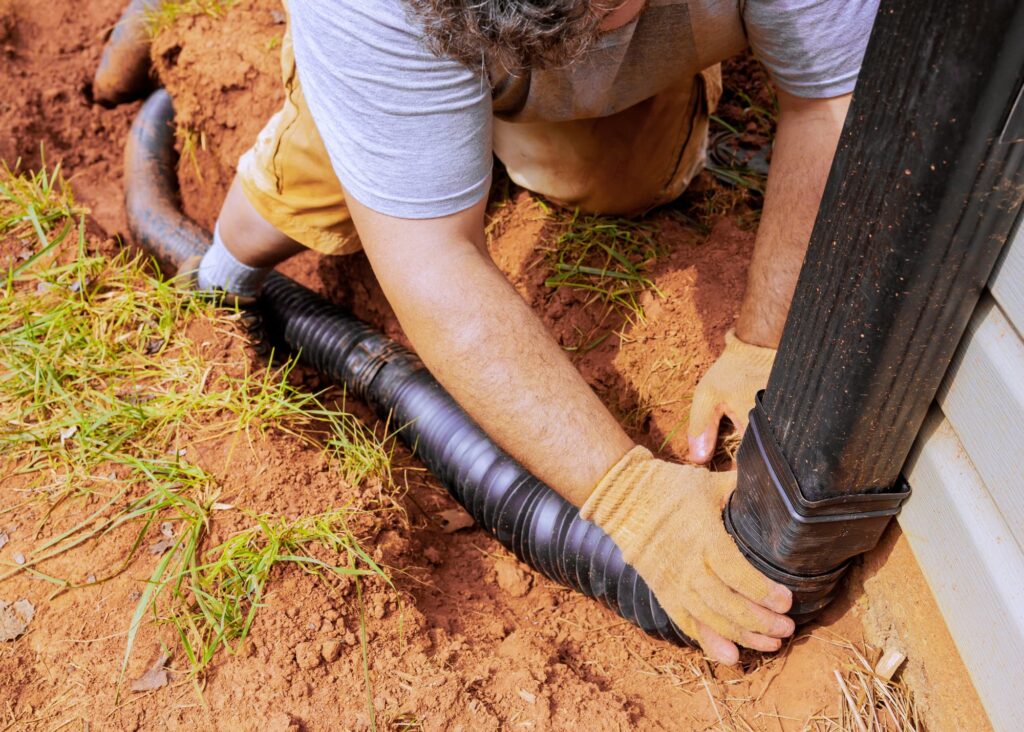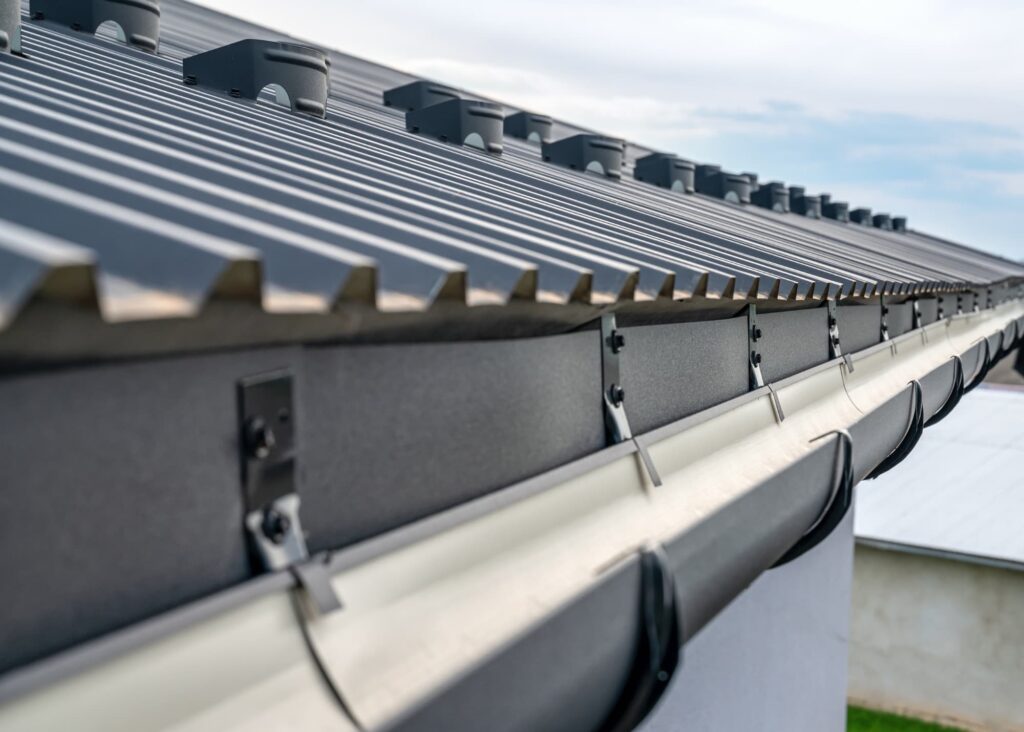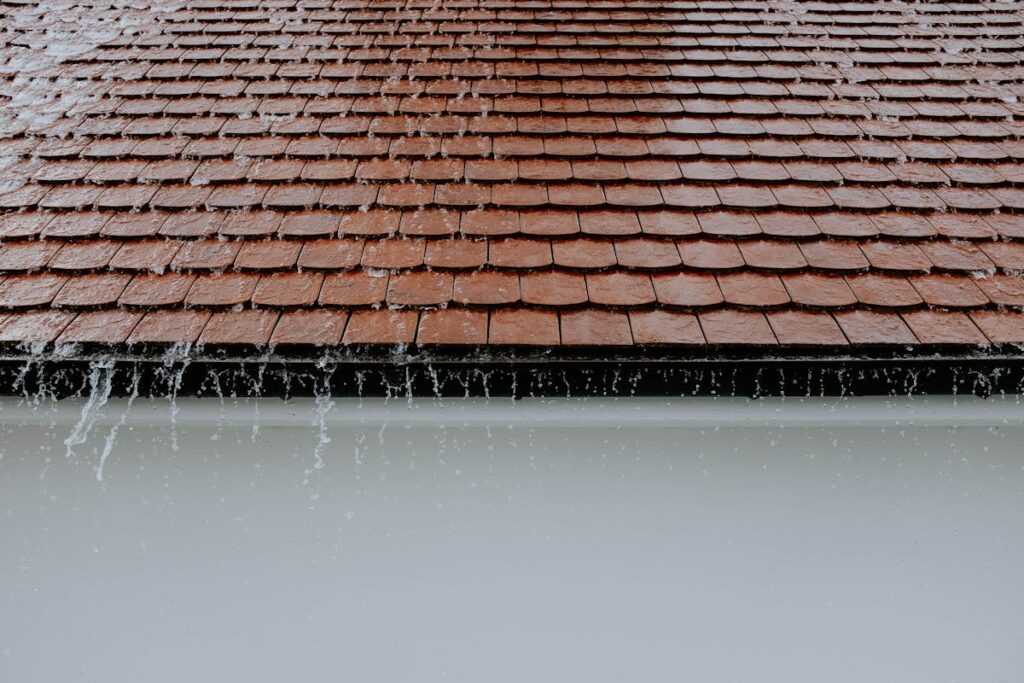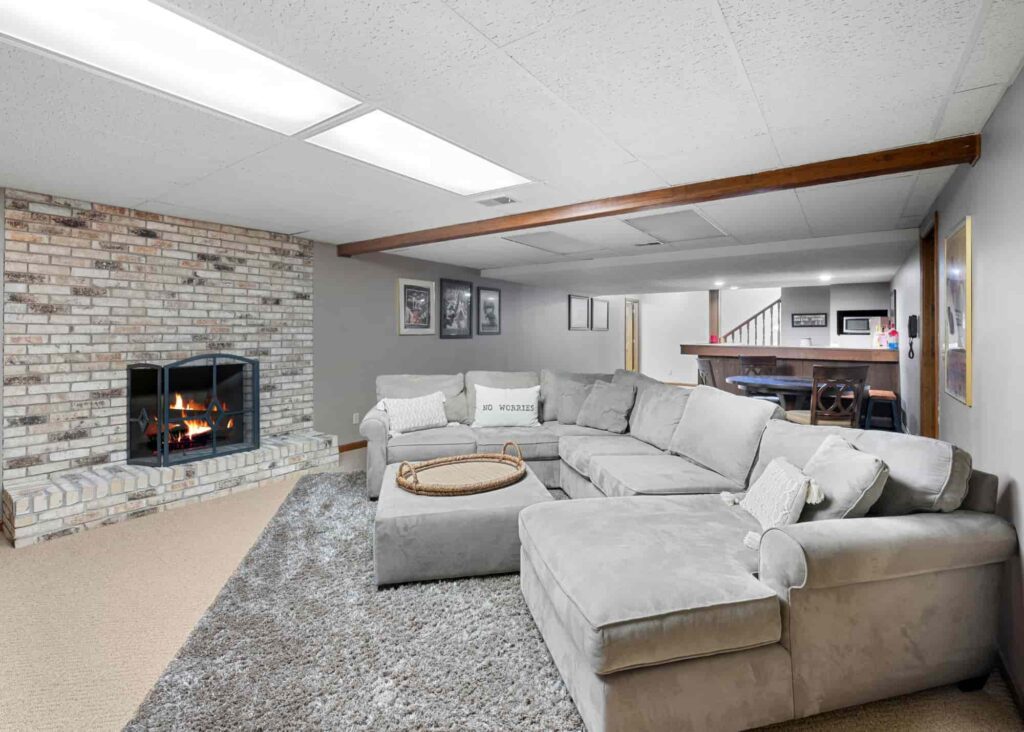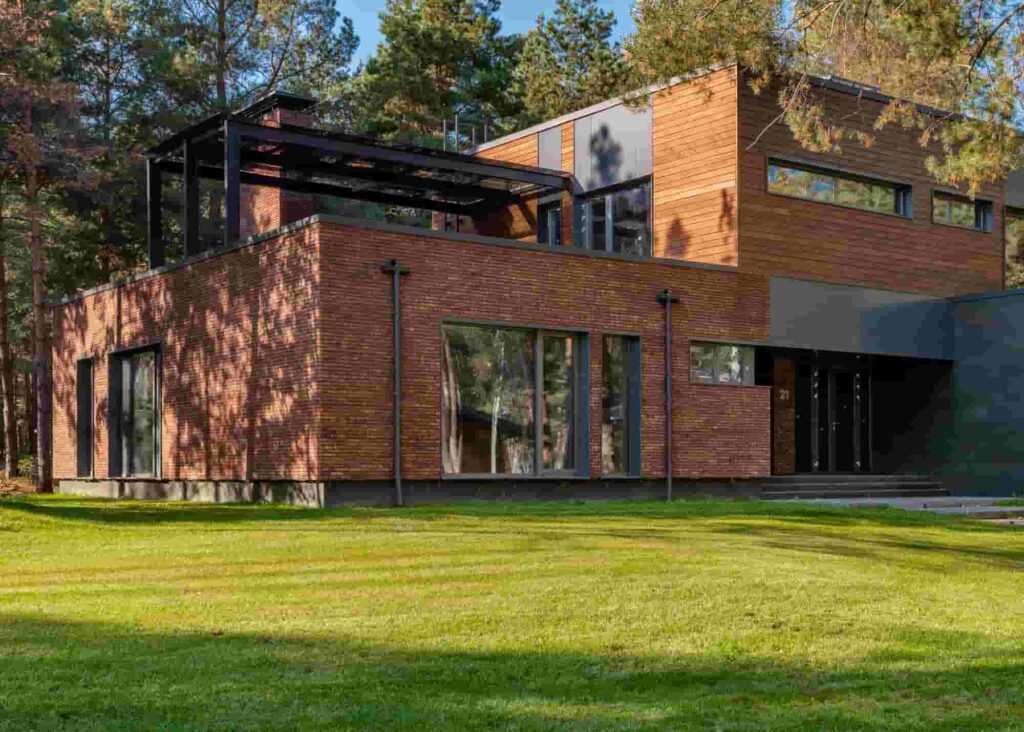Here in Chicagoland, where we get our fair share of rain and snow, landscape drainage is a make-or-break factor for your property’s health and value. We’re talking about more than just puddles – we’re talking about protecting your biggest investment.
The landscape drainage pros at Ware Landscaping specialize in managing water flow around our clients’ properties. We create solutions giving water a roadmap away from your home, instead of letting it pool up where it shouldn’t. Whether you’ve got a cozy bungalow in Oak Park or a sprawling estate in Naperville, understanding drainage is key to keeping your property high and dry.
In this guide, we’ll break down how to spot drainage problems and what you can do about them. We’ll cover everything from simple DIY fixes to when it’s time to call in the pros.
By the time we’re done, you’ll be ready to tackle any water issues head-on and keep your landscape looking impeccable year-round. Let’s dive in and explore what to look out for and detail yard drainage benefits.
Signs of Poor Drainage in Your Landscape
Recognizing drainage issues early can save you from costly repairs down the line. Here are key indicators to watch for:
Visual indicators
- Standing water or puddles that persist 24+ hours after rainfall
- Eroded areas or small channels forming in your yard
- Water stains on exterior walls or foundation
- Overflowing gutters during light rain
Impact on plants and soil
- Yellowing or wilting plants, even with adequate watering
- Moss or algae growth on soil surface
- Compacted, waterlogged soil that feels spongy underfoot
- Soil erosion, especially on slopes
Structural concerns
- Cracks in foundation or basement walls
- Mold or mildew in basement or crawl spaces
- Warped wood flooring or water stains on interior walls
- Shifting or settling of patios, walkways, or driveways
If you notice any of these signs, it’s time to address your landscape’s drainage. Prompt action can prevent more serious damage to your property and landscaping.
The Consequences of Inadequate Drainage
Ignoring drainage issues can lead to severe problems that extend beyond just a soggy lawn. Here are the main consequences of poor drainage:
Damage to your home’s foundation
- Water accumulation near the foundation can cause cracks and structural instability
- Hydrostatic pressure can lead to basement leaks and wall bowing
- Soil erosion around the foundation may result in settling and uneven floors
Landscape deterioration
- Waterlogged soil suffocates plant roots, leading to yellowing and death of grass, shrubs, and trees
- Soil erosion washes away nutrients, making it difficult for plants to thrive
- Constant moisture promotes fungal growth and various plant diseases
Pest problems and health risks
- Standing water creates breeding grounds for mosquitoes and other insects
- Damp conditions attract pests like termites and carpenter ants
- Excess moisture can lead to mold growth, posing respiratory health risks
By addressing drainage issues promptly, you can avoid these costly and potentially hazardous consequences, ensuring a healthier environment for both your home and family.
Types of Lawn Drainage Systems
The landscape drainage pros at Ware Landscaping specialize in effective drainage solutions in various forms, each designed to address specific landscape challenges:
Surface drainage solutions
- Grading and sloping: Reshaping the land to direct water away from structures
- Swales: Shallow, sloped channels that guide water flow
- Catch basins: Collects surface water and directs it to underground pipes
- Rain gardens: Decorative depressions that capture and filter runoff
Subsurface drainage options
- French drains: Perforated pipes surrounded by gravel to redirect groundwater
- Dry wells: Underground structures that collect and slowly disperse water
- Sump pumps: Mechanical systems that pump out excess water from low areas
Importance of customized solutions
- Every landscape is unique, requiring tailored drainage approaches
- Factors like soil type, property slope, and local climate influence system design
- Professional assessment ensures the most effective and efficient drainage solution
By combining these systems strategically, you can create a comprehensive drainage plan that addresses your property’s specific needs, ensuring optimal water management and landscape health.
DIY vs. Professional Drainage Solutions
When facing drainage issues, homeowners often wonder whether to tackle the problem themselves or call in the experts. Here’s a guide to help you decide:
When to tackle drainage issues yourself
- Minor surface water problems in small areas
- Simple gutter and downspout maintenance or extensions
- Basic regrading of small sections in your yard
- Installing rain barrels or small rain gardens
Benefits of hiring landscape drainage pros
- Expertise in identifying underlying causes of drainage problems
- Access to specialized equipment for efficient installation
- Knowledge of local regulations and permit requirements
- Ability to design comprehensive, long-term drainage solutions
- Experience in handling complex issues like French drains or extensive regrading
- Warranty on work performed, providing peace of mind
While DIY solutions can be effective for minor issues, professional help is often necessary for larger or more complex drainage problems. Experts can provide tailored solutions that address your specific landscape needs, potentially saving you time, money, and frustration in the long run.
Yard Drainage Benefits
Investing in proper yard drainage offers numerous advantages that go beyond just preventing water accumulation. Let’s explore the key benefits:
Protecting your property investment
- Prevents costly foundation damage and basement flooding
- Maintains soil stability, reducing risk of erosion and landslides
- Preserves hardscaping elements like patios and driveways
- Increases property value by ensuring a well-maintained landscape
Enhancing landscape health and appearance
- Promotes healthy root growth for trees, shrubs, and grass
- Prevents soil compaction, allowing better nutrient absorption
- Reduces risk of plant diseases caused by excess moisture
- Maintains a lush, vibrant lawn and garden year-round
Increasing usable outdoor space
- Eliminates soggy, unusable areas in your yard
- Allows for expanded outdoor living areas and recreational spaces
- Improves safety by reducing slippery, muddy surfaces
- Enables better landscape design options and feature placement
By implementing effective drainage solutions, you not only protect your property from water-related damage but also create a more beautiful, functional, and enjoyable outdoor environment.
Environmental Considerations in Landscape Drainage
Modern landscape drainage goes beyond simply moving water off your property. It’s about managing resources wisely and considering environmental impact. Let’s explore some eco-friendly approaches that solve drainage issues while supporting sustainability.
Sustainable drainage practices
Gone are the days of just shuffling water down the storm drain. Now, we’ve got clever ways to use that water right where it falls.
Permeable paving is a game-changer, letting water seep through instead of running off. Bioswales and rain gardens aren’t just pretty – they’re natural filters that clean water as it moves through your landscape. For the really ambitious, green roofs can turn your house into part of the solution, soaking up rain before it ever hits the ground.
Water conservation methods
Why let good rainwater go to waste? With a bit of planning, you can turn your drainage system into a water-saving powerhouse. Rainwater harvesting systems can collect roof runoff for watering your garden later.
Smart design can help water soak back into the ground, replenishing our aquifers. And if you’re tired of over-watering, smart irrigation systems can take the guesswork out of keeping your lawn lush.
Native plant selection for better drainage
When it comes to plants, local is the way to go. Native Illinois species are already adapted to our climate and soil, meaning they can handle whatever Mother Nature throws their way.
Deep-rooted prairie plants are drainage superstars, sucking up excess water like a sponge. By mixing it up with a variety of native plants, you’ll create a landscape that naturally manages water flow – and looks great doing it.
By incorporating these eco-friendly practices, you’re not just solving drainage problems – you’re contributing to a healthier, more sustainable environment. It’s a win-win for your yard and the planet.
Proper landscape drainage is crucial for maintaining a healthy, beautiful, and functional outdoor space. From protecting your home’s foundation to enhancing plant health and preventing pest issues, good drainage impacts every aspect of your property. By recognizing the signs of drainage problems and implementing appropriate solutions, you can safeguard your investment and enjoy a thriving landscape year-round.
Landscape Drainage Pros
Is your Chicagoland yard starting to look more like Lake Michigan after a rainstorm? Don’t let water woes turn your dream landscape into a soggy nightmare. It’s time to take action before those puddles develop into more serious problems.
At Ware Landscaping, we’ve seen it all when it comes to drainage issues, and we’re ready to roll up our sleeves for you. Give us a ring at (630) 912-7691 or contact us online. We’ll set you up with a free consultation to discuss what kind of drainage solution would work best for your property.
Let’s team up to keep your property high and dry, come rain or shine.


